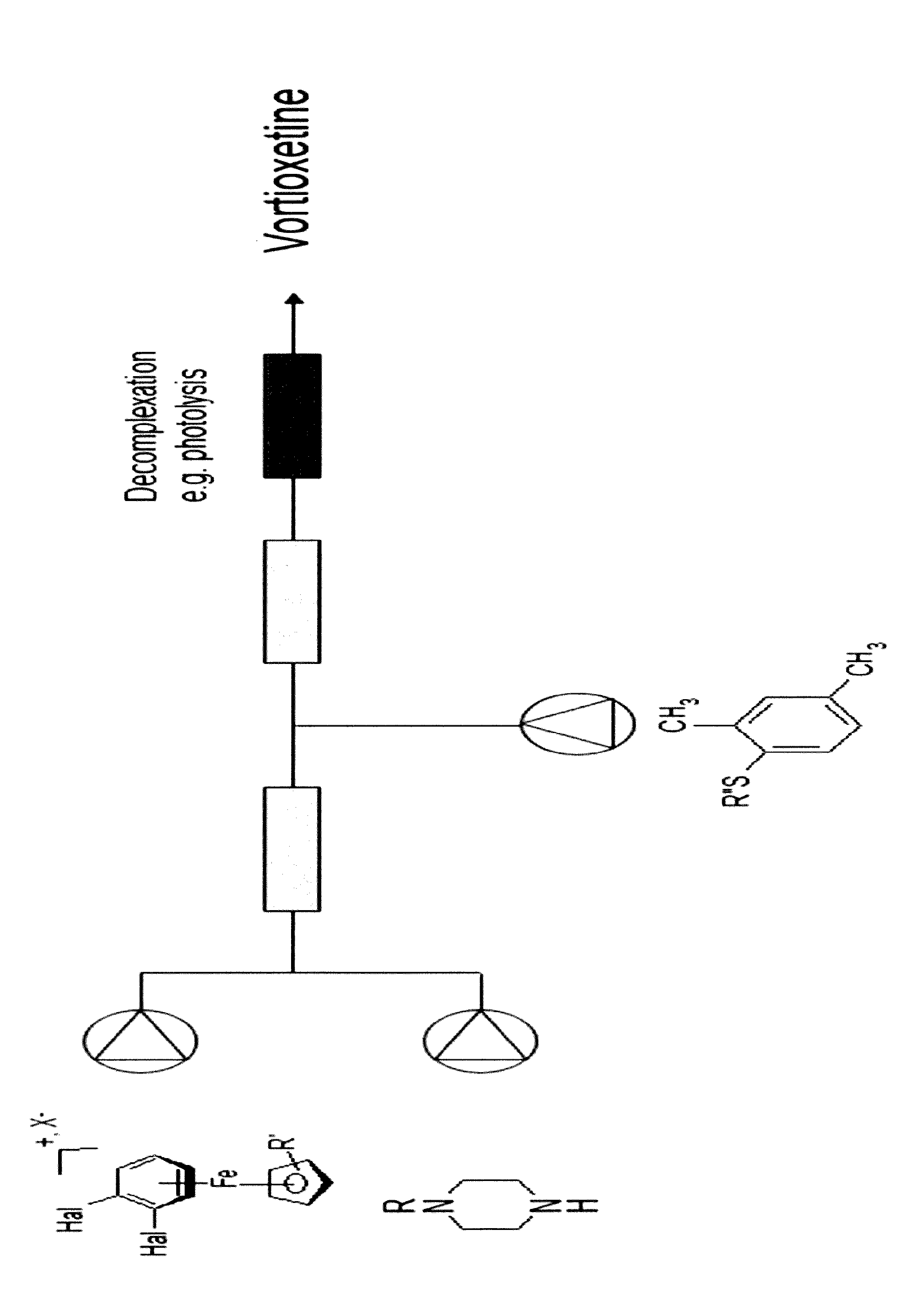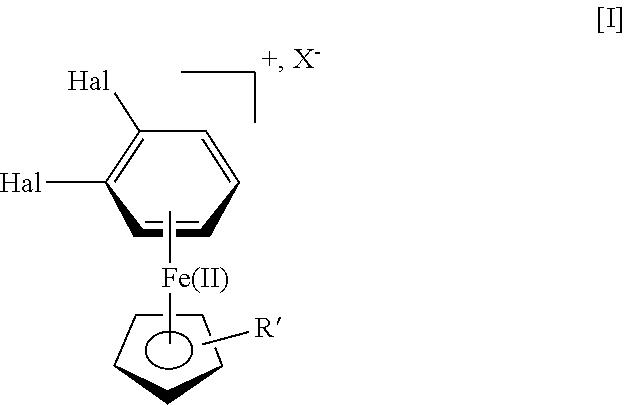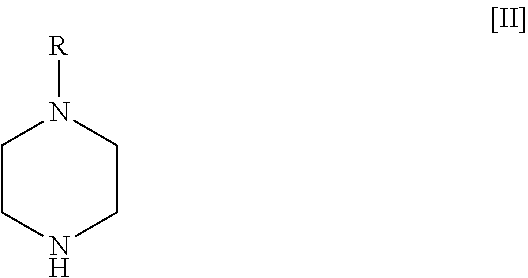Vortioxetine manufacturing process
a manufacturing process and technology of phenylpiperazine, applied in the direction of iron organic compounds, organic chemistry, etc., can solve the problems of unattractive manufacturing route, high cost, and inability to manufacture solid-phase chemistry for pharmaceutical production, etc., and achieve high yield
- Summary
- Abstract
- Description
- Claims
- Application Information
AI Technical Summary
Benefits of technology
Problems solved by technology
Method used
Image
Examples
example 1
[0044]η6-1,2-Dichlorobenzene-η5-cyclopentadienyliron(II) hexafluorophosphate (25 g, 61 mmol), potassium carbonate (16.7 g, 121 mmol) and piperazine (10.3 g, 120 mmol) was dissolved in a mixture of THF (200 mL) and water (50 mL). The reaction mixture was stirred for 1 h at ambient temperature. To the reaction mixture was added 2,4-dimethyl thiophenol (8.8 g, 63.7 mmol) and stirring was continued overnight.
[0045]The reaction mixture was poured into aqueous hydrochloric acid (2 M, 200 mL) over a period of 20 min. To the mixture was added n-heptane (15 mL) and the phases were separated. The organic phase was extracted once with water (15 mL). The THF / water phase was circulated at room temperature through an irradiated glass spiral (100 W incandescent light). During this step water and THF separated and only the lower water phase was pumped through the photolysis equipment, and the liberated 1-[2-(2,4-dimethyl-phenylsulfanyl)-phenyl]-piperazine concentrated in the upper THF phase.
[0046]A...
example 2
[0054]1,2-Dichloro benzene (158.4 g, 1.08 mol), ferrocene (40.6 g, 218 mmol), aluminium trichloride (13.8 g, 104 mmol) and fine aluminium powder (7.0 g, 26 mmol) were mixed and heated at 110° C. for 6 h. The reaction mixture was cooled to 25° C. and added slowly to a mixture of ice (240 g) and n-heptane (100 mL) over 25 minutes. (CAUTION: the treatment of unreacted aluminium trichloride with water is highly exothermic).
[0055]The mixture was treated with Celite 545® (14 g) and stirred at ambient temperature for 20 minutes prior to filtration. The filter cake was washed with water (15 mL). The filtrates were combined, and the phases were separated. The water phase was washed with toluene (2×50 mL). To the water phase was slowly added aqueous sodium hydroxide (10.8 M, 70 mL, 0.76 mol) until the pH was 6.5. The precipitated aluminium oxides was removed by filtration, and the filter cake was washed with water (25 mL).
[0056]The collected aqueous phases was added to a mixture of potassium ...
PUM
| Property | Measurement | Unit |
|---|---|---|
| temperatures | aaaaa | aaaaa |
| temperature | aaaaa | aaaaa |
| temperature | aaaaa | aaaaa |
Abstract
Description
Claims
Application Information
 Login to View More
Login to View More - R&D
- Intellectual Property
- Life Sciences
- Materials
- Tech Scout
- Unparalleled Data Quality
- Higher Quality Content
- 60% Fewer Hallucinations
Browse by: Latest US Patents, China's latest patents, Technical Efficacy Thesaurus, Application Domain, Technology Topic, Popular Technical Reports.
© 2025 PatSnap. All rights reserved.Legal|Privacy policy|Modern Slavery Act Transparency Statement|Sitemap|About US| Contact US: help@patsnap.com



